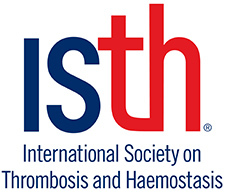World Thrombosis Day Campaign Unites Thousands of Global Partners to Shine a Spotlight on Blood Clots as an Urgent Health Problem
In its Eighth Year, the Global Campaign Aims to Increase Public Awareness of Blood Clots that Result from Hospitalization and COVID-19
CHAPEL HILL, N.C., Oct. 13, 2021 /PRNewswire/ -- Today, the World Thrombosis Day campaign encourages the public, healthcare professionals and policy makers to keep their "Eyes Open to Thrombosis" and join together to place a spotlight on thrombosis as an urgent and growing global health problem.
A campaign of the International Society on Thrombosis and Haemostasis (ISTH), World Thrombosis Day connects and empowers more than 3,000 partner organizations and individuals from over 120 countries to join forces in the awareness, treatment and prevention of blood clots.
Thrombosis, commonly known as blood clots, can trigger a host of life-threatening medical conditions, including heart attack, thromboembolic stroke and venous thromboembolism (VTE). VTE occurs when one or more blood clots form in a deep vein, most often in the leg (deep vein thrombosis, DVT), and can travel in the circulation and lodge in the lungs (a condition known as pulmonary embolism, PE).
"Despite the fact that one in four people worldwide are dying from conditions caused by blood clots, it is not widely known, and is an urgent public health issue," said Prof. Beverley Hunt, OBE, chair of the World Thrombosis Day Steering Committee.
This year, blood clots took to the global stage as research showed an increased risk of blood clots in hospitalized patients with COVID pneumonia. Additionally, blood clots were found as a very rare, but serious side effect to certain COVID-19 vaccines.
"In a turbulent year due to the COVID-19 pandemic, we have unfortunately seen an increased rate of hospital-associated clots due to sick patients with COVID-19," noted Prof. Hunt. "The risk of clots in COVID-19, along with the other causes of hospital-associated clots, can be reduced if thromboprophylaxis is used (blood thinners)."
Prof. Hunt as well as all members of the World Thrombosis Day Steering Committee including Alex Spyropoulos, M.D., FACP, FCCP, FRCPC, System Director, Anticoagulation and Clinical Thrombosis Services, at Northwell Health in New York, USA, have been on the forefront of the COVID-19 pandemic and have led the way in research around clotting, COVID-19, and treatment to ensure patients receive the best care possible globally.
"Our clinic, which was once in the epicenter of the COVID-19 pandemic in the U.S., experienced firsthand the severity of increased thrombotic events in severe COVID-19 patients," said Dr. Spyropoulos. "I am passionate about finding new treatments for these severely ill patients and I am currently involved in several research studies. We are optimistic about the progress that has been made for patients."
The World Thrombosis Day campaign aims its focus on the following areas this year:
- Hospital-associated thrombosis: Hospitalized patients are at an increased risk of blood clots due to immobility, their illness and/or surgery. Hospital-associated clots can occur in the hospital or within 90 days of discharge, and account for 60 percent of all VTE and well as being the leading cause of preventable death due to hospital admission.
- COVID-19-related thrombosis: Research shows that COVID-19 increases the risk of clots by making the blood very "sticky".
- Cancer-related thrombosis: Patients with cancer are four times more likely to develop a serious blood clot compared to the general population. This increased risk is driven by factors such as surgery, hospitalization, infection, and genetic coagulation disorders by cancer-specific factors including type, histology, stage of the malignancy, cancer treatment and certain biomarkers.
- Gender-specific thrombosis: Estrogen-based oral contraceptive and hormone replacement therapy pills, as well as pregnancy are all blood clot risk factors for women. Women are five times more likely to develop a blood clot during pregnancy and about one in every 1,000 pregnant women can develop a blood clot. (Centers for Disease Control and Prevention, 2020, and Cardinal Health, 2019)
Approximately 10 million cases of hospital associated VTE occur annually across the world, yet the condition can often be prevented with early detection and preventative blood thinners. The World Thrombosis Day campaign calls upon healthcare professionals to provide VTE risk assessments to all hospitalized patients. In addition, the campaign encourages the public, including patients, to ask for a VTE risk assessment on admission to hospital.
World Thrombosis Day shares these key tips to help prevent blood clots:
- Know the signs and symptoms of a blood clot. Red flags to look for are unexplained leg pain, sometimes associated with tenderness, redness and swelling. Pulmonary embolism can cause shortness of breath, rapid breathing, chest pain and occasionally coughing up blood.
- Ask for a VTE risk assessment. All individuals, especially those who are hospitalized, should ask their healthcare professional for a VTE risk assessment, a questionnaire that gathers medical information to discern a patient's potential risk factors for developing blood clots.
- Stay active and hydrated. If you plan to sit still for a long period of time, set an alarm for five minutes before every hour, and use that time to get up, walk around and stretch. Staying immobile for long periods of time can increase the risk of blood clots. Drink plenty of water to prevent dehydration, which can cause blood to thicken, resulting in blood clots.
To learn more about blood clots, visit www.worldthrombosisday.org.
About World Thrombosis Day
Launched in 2014 and held annually on 13 October, World Thrombosis Day aims to increase public, healthcare professional and health care systems' awareness of thrombosis and, ultimately, reduce unnecessary deaths and disabilities from thromboembolic disease through a greater awareness of its causes, risk factors, signs and symptoms, and evidence-based prevention and treatment. The mission of World Thrombosis Day supports the World Health Assembly's global target of reducing premature deaths by non-communicable disease by 25 percent by 2025, as well as the World Health Organization's Thirteenth General Programme of Work 2019–2023, the Montevideo Roadmap 2018-2030 on NCDs and the Political Declaration of UNGA' Third High-level Meeting on NCDs. The ISTH and WTD participating organizations are grateful for the support of the corporate supporters, including the Trailblazers: Bayer; Bristol Myers Squibb; Pfizer; and Johnson & Johnson, the Champions: Daiichi-Sankyo; Sanofi; and Viatris, the Contributors: Inari Medical; and Leo, and the Impact Partners: Aspen; Cardinal Health; Roche; Stago; Sysmex; and Total CME. Visit www.worldthrombosisday.org for more information and to get involved.
About the International Society on Thrombosis and Hemostasis (ISTH)
Founded in 1969, the ISTH is the leading worldwide not-for-profit organization dedicated to advancing the understanding, prevention, diagnosis, and treatment of thrombotic and bleeding disorders. ISTH is an international professional membership organization with more than 7,500 clinicians, researchers, and educators working together to improve the lives of patients in more than 110 countries around the world. Among its highly regarded activities and initiatives are education and standardization programs, research activities, meetings and congresses, peer-reviewed publications, expert committees, and World Thrombosis Day on 13 October. Visit ISTH online at www.isth.org.
SOURCE International Society on Thrombosis and Haemostasis

Related Links
WANT YOUR COMPANY'S NEWS FEATURED ON PRNEWSWIRE.COM?
Newsrooms &
Influencers
Digital Media
Outlets
Journalists
Opted In






Share this article